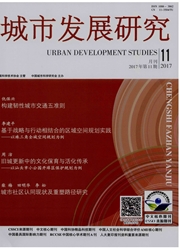

 中文摘要:
中文摘要:
以庐山国家级风景名胜区为例,采用历史文献法和实地调研法相结合的研究方法,探索了风景名胜区空进演进的动力机制,提出了优化空间发展的具体策略.研究发现:①风景名胜区空间结构经历了低水平均衡、单一中心、点轴结构和单一中心主导下的网络化结构等日益复杂化的空间演进过程;②风景名胜区每个空间演进阶段的动力机制差异性较大,分别经历了农耕经济式的自发动力、移民植入式的外部动力、国家战略式的外部动力和市场需求式的综合动力机制;③提出从开展风景名胜区主体功能区划、坚持政府调控下的市场主导的开发模式、优化配置风景名胜区利益补偿与分配格局、厘清风景名胜区管理机构的权责范围等四个方面优化风景名胜区空间格局的对策措施.
 英文摘要:
英文摘要:
Taking Lushan scenic area as an example, the paper uses historical literature and research methods explore the dynamic mechanism of spatial evolution in scenic spot and proposes several specific strategies of optimizing spatial patterns. The study finds : (1) scenic spot has experienced a low level equilibrium spatial structure, single center, point-shaft structure and network structure dominated by a single center. Spatial evolution of scenic spot shows more and more complexity and more obviously differences; (2) scenic spots has been drived by a spontaneous dynamic style farming economy, immigration implantable external power, the national strategy type of external power and integrated power system market demand style ;(3) finally, the study put forward a series of measures to optimize spatial patterns of scenic spot: carrying out the main function zoning, advocating government regulation market-driven development mode, optimizing compensation and benefit distribution pattern of scenic spots, clarifing responsibilities of different government departments. Under different background and geographic conditions, protection and development of scenic spots exhibit more complex than the previous situation, the future study needs the multi-angle, multi-disciplinary perspectives to a deeper level of understanding of operating mechanism scenic areas and propose scientific and rational regulatory policies.
 同期刊论文项目
同期刊论文项目
 同项目期刊论文
同项目期刊论文
 期刊信息
期刊信息
